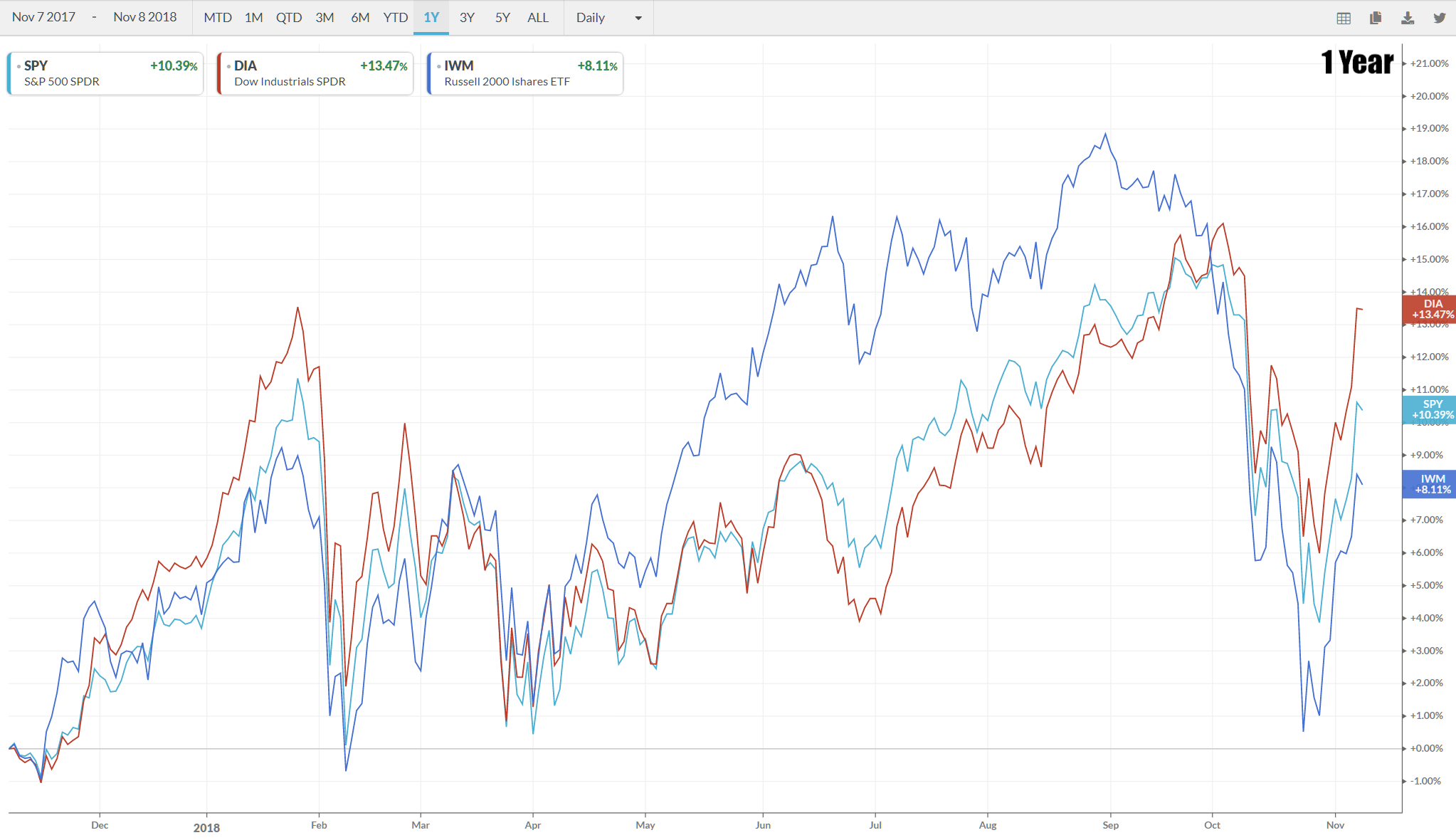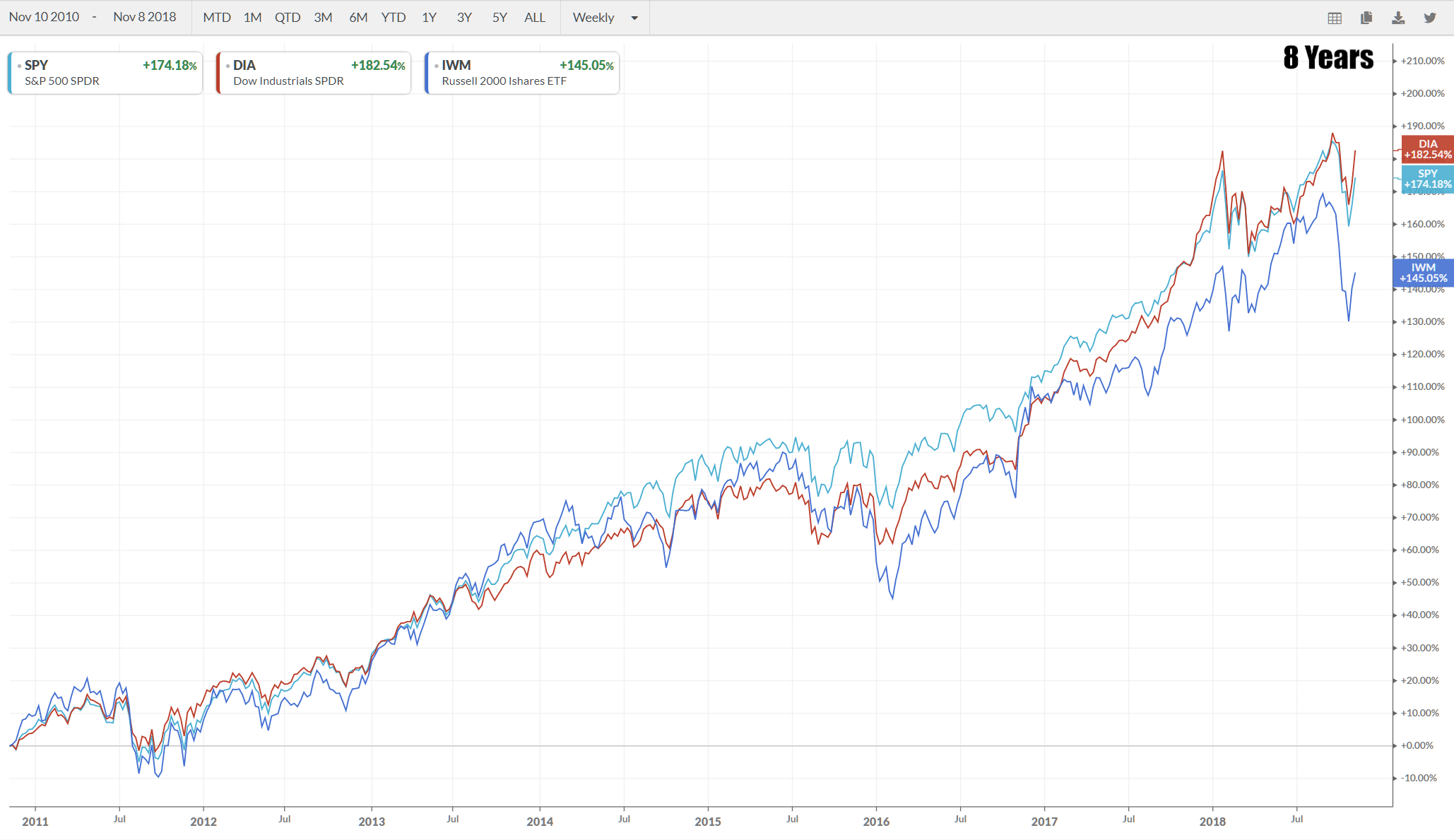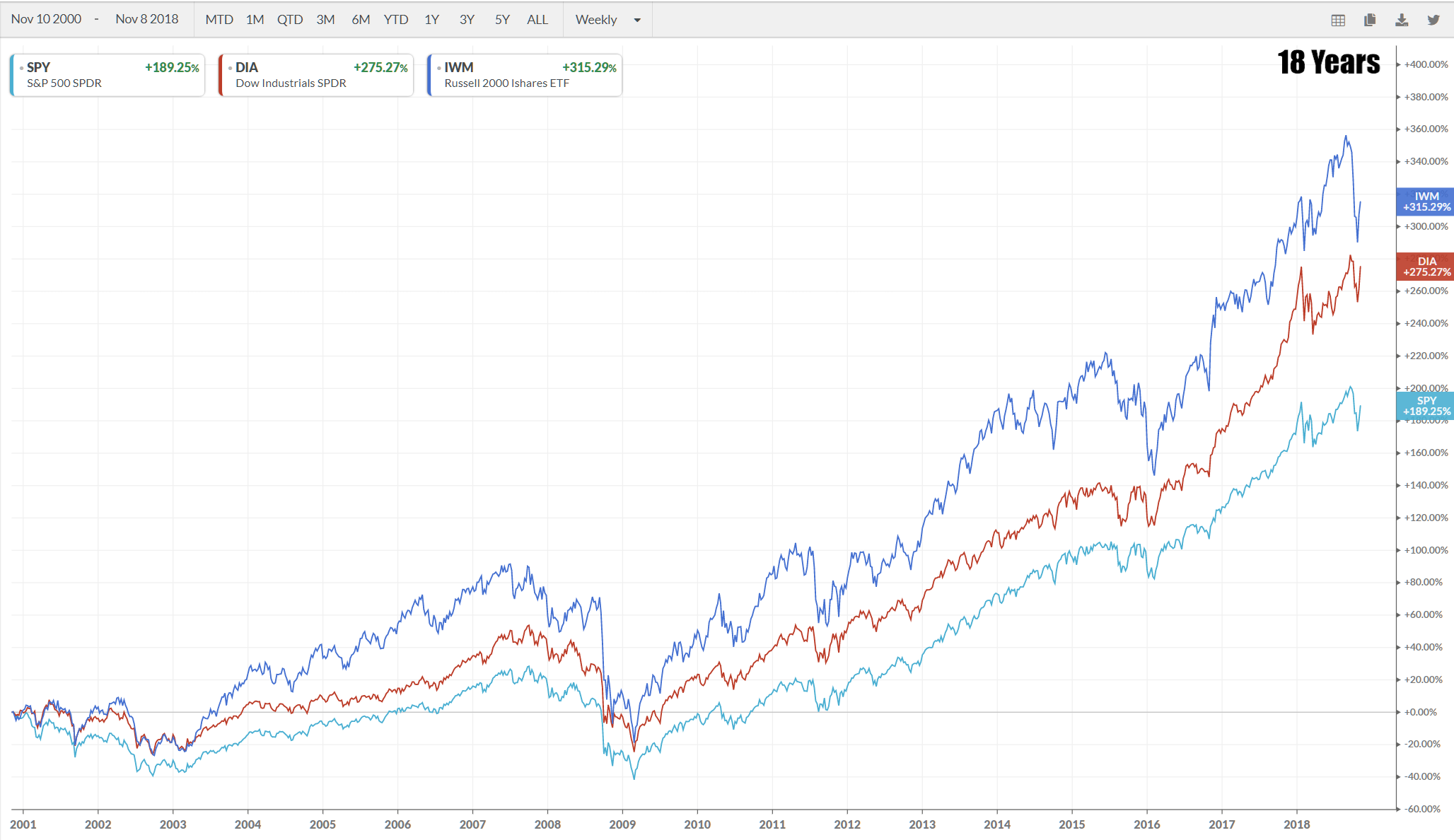It is always interesting to look at how various subsections of a market perform over the long term and to try and ascertain what the implications of this might be. The charts below represent the relative performance of the ETF’s that represent the Dow (DIA) the S&P 500 (SPY) and the Russell 2000 (IWM) over various time frames The US market presents an interesting challenge for this sort of analysis because the Dow is a bullshit index that is not really representative of the current state of the US market as it has long ignored technology based issues. In this respect it is a backwards looking index. Yet despite this anomaly it is still the most widely followed index in the world. However, just because everyone thinks it is a good idea doesn’t necessarily mean that it is. But there is always something to be learned simply by looking at the data.
This sort of analysis does have some difficulties most notably as can be seen it is dependent upon start and end dates. For example, if I had stopped the 1 year analysis in September then IWM would have shown the most impressive performance to date. As such we have to be a little bit circumspect about shorter term analysis as performance ebbs and flows but we do get a sense of how markets behave over the long term and over the very long term it seems as if the small to mid cap Russell 2000 wins. In particular what interests me is the performance post the GFC – locally the impression has always been that investors flood the blue chips and then the lesser names but it appears that in the US this might be different. However, we do have to be careful in that we are not really comparing apples with apples. The S&P/ASX 200 is a fundamentally different index to the Dow in that it is a much broader index involving a much higher level of the overall market capitalisation. In this respect it sits somewhere between the S&P 500 and the Russell 2000 so perhaps the situation is not really that different. Again we have to be careful making any decisions regarding the Dow due to its idiosyncratic nature.
There’s actually a weekly updated article on the topic that you might enjoy. Check it out here: https://www.suredividend.com/








